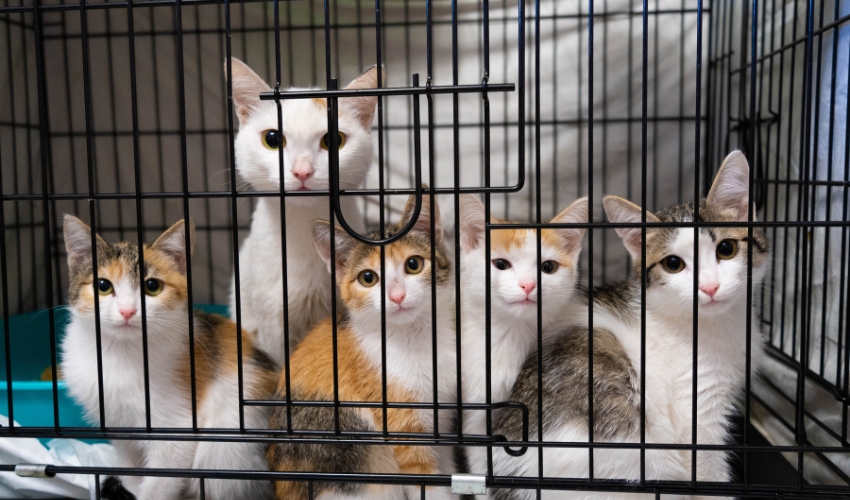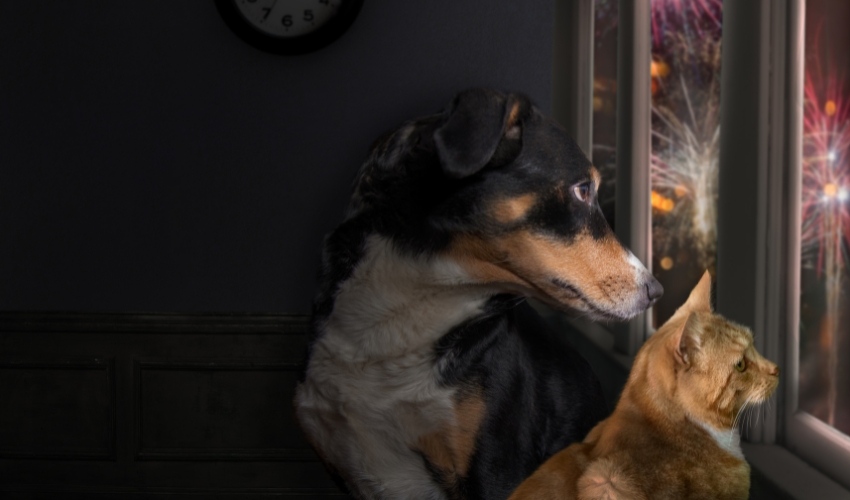Canine owners know that parvovirus is highly infectious and dangerous for dogs. Hence, learning how to cure parvo without a vet is a good step toward winning the battle against the virus.
Treating parvo at home may instantly save the pup’s life, and this article can help with that.
Parvovirus In Dogs
Canine parvovirus is a lethal disease that attacks dogs’ lymphopoietic tissues, bone marrow, and heart. It has varying levels of severity and can worsen the dog’s condition by environmental and other factors.
Like most viruses, the risk of parvo is much higher in unvaccinated pups. Parvo can infect unvaccinated dogs of any age but primarily targets puppies from six weeks to six months.
An infected canine suffering from further anxiety would have a much inferior immune system. In addition, if dogs with parvo also suffer from intestinal parasites, owners may expect their dog’s parvo to become more severe.
The transmission of parvo in dogs is also contagious. Even contaminated feces would be sufficient to spread the virus to other dogs when licked or sniffed. Nevertheless, with the proper guidance and treatment from a vet, the chances of the dog’s survival may increase.
4 Ways On How To Cure Parvo Without A Vet
Although hospital treatment is ideal and would generate better chances of recovery, it is financially challenging for most dog guardians. A few days of infirmary treatment can hurt most pockets, especially without pet insurance.
Hence, parvo-diagnosed dog caretakers rely on home medications. Some of the most valuable ways to treat parvovirus at home in case veterinary medicine is not in the options are as follows:
1. Provide proper nutrition and supplementation
Parvo-infected canines have diminished appetites. Thus, serving them easily digestible food should help their overall parvo treatment.
It is best to give puppies canned baby food containing enough moisture. If they are having difficulties ingesting it, owners can chop the food with water and then feed it to them using a dropper or syringe.
Other readily digestible food would include white rice with raw egg. Besides its edible feature, it is also effective in sustaining the canine’s immune system. Offering them apple cider vinegar may also provide gut comfort due to its property that fights bacterial infection.
2. Ensure adequate hydration
Vomiting and diarrhea are two of the expected effects of parvovirus infection. If left untreated and severe dehydration ensues, it may result in death.
To determine the dog’s hydration status, lift the patch of its skin above the back of its shoulder blades. A promising sign of hydration happens when the skin is elastic enough to snap back into place.
On the contrary, if the skin stays in place, the dog may suffer from dehydration. Prepare about a half bowl of water. In addition, give them another half a bowl of oral rehydration solution to refill the dog’s electrolyte and fluid levels.
3. Regulate body temperature
A canine’s average body temperature is 101°F to 102.5°F or 38°3 to 39°C. When infected with the canine parvovirus, their temperature levels may cause fluctuations. This causes significant discomfort for dogs and may damage their organs
If their temperature increases, cool the pup’s body down with a wet cloth or give them paracetamol. On the other hand, if their body temperature drops, wrap a blanket, wound them, or warm them up with a heat compress or heating lamp.
4. Give them medications and antibiotics
Part of parvovirus treatment is controlling the main drivers of worsening the dog’s condition. Hence, having dogs take anti-nausea and anti-diarrheal drugs can manage their vomiting and fluid loss and can contribute to easing discomfort.
Remember that their vet must prescribe the type of medication to ingest in them as most pain drugs for humans may be toxic for canines. Once their pain gets relieved, it can speed up the healing process. The dogs can now rest, eat, and drink without problem.
3 Ways To Prevent Canine Parvovirus Infection

Survival from this infection is possible, but it highly depends on the dog’s age, size, and condition. Most pup patients will not survive without medical help. If the owner sees early signs of parvovirus, it is best to perform the following for prevention:
1. Vaccination
Vaccination usually starts as early as four weeks in shelter vicinities, followed by a booster shot every two to four weeks until they reach 16 to 20 weeks old. In addition, another booster must take place the following year, then every three years after that.
2. Cleaning using appropriate disinfectants
Canines with parvovirus must be in isolation during their treatment and can last up to two more weeks after recovery. Since canine parvovirus is contagious and hardy in its surroundings, proper disinfection is vital.
Most household cleaners do not kill the virus. Use diluted bleach with a 1:30 ratio with water instead.
3. Avoid high-risk locations
When canines are still unvaccinated or still a pup, they are prone to get infected with various diseases. Avoid strolling them in dog parks, pet stores, and other public areas.
Conclusion
Part of responsible canine ownership is knowing when to visit the vet to contain the infection. In cases of financial trouble, dog guardians tend to go for various ways on how to cure parvo without a vet. Ensure that such treatments are proven effective and prescribed by the vet!
Be a responsible pet owner and learn about parvo prevention and treatment. Shop for pet products at Doobert Store and help make a difference in the lives of animals in need!










